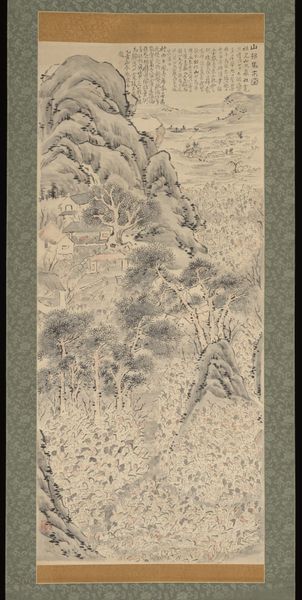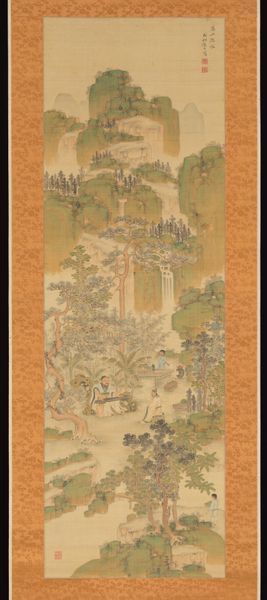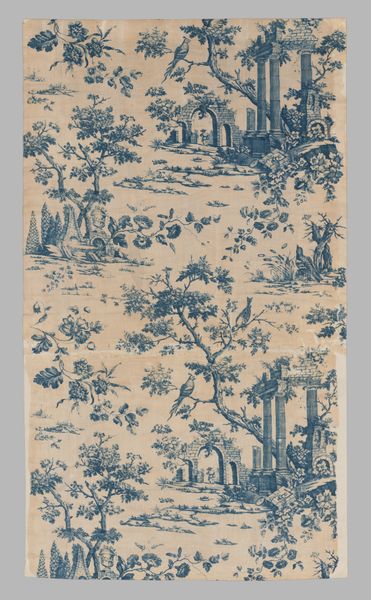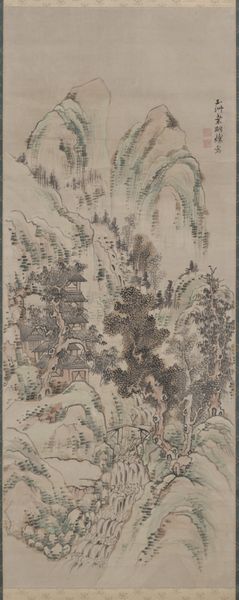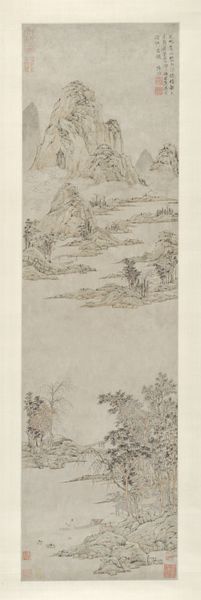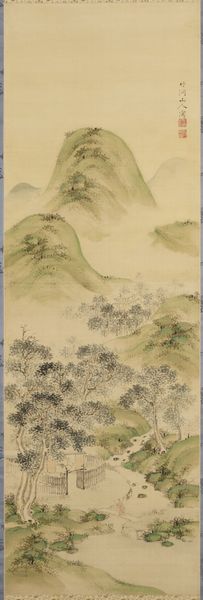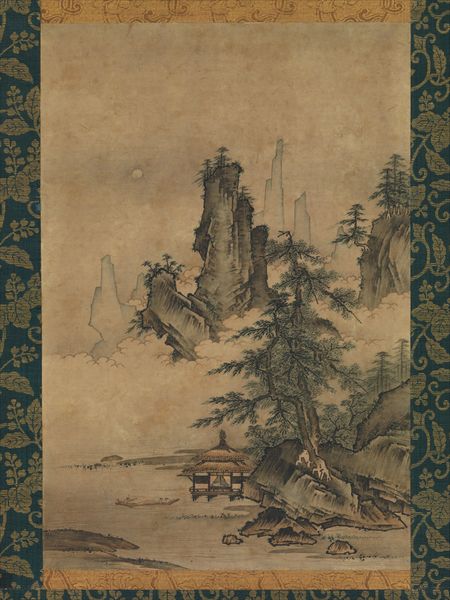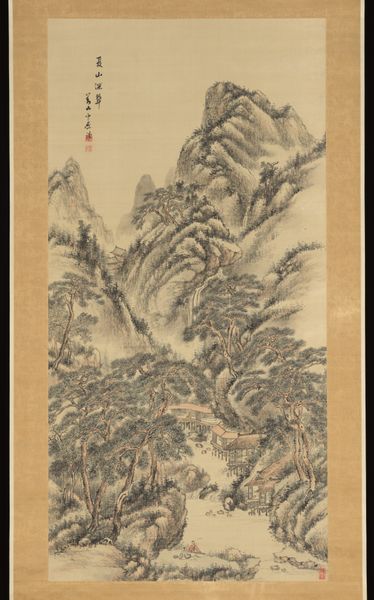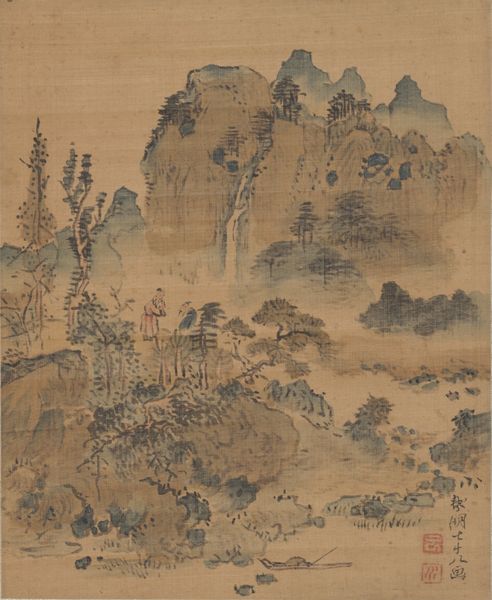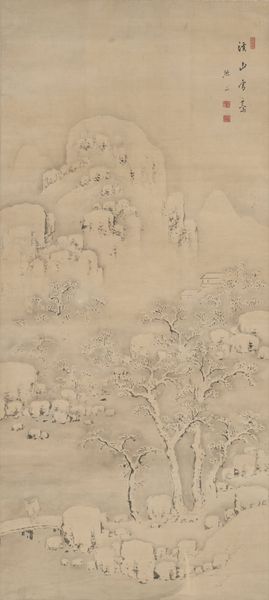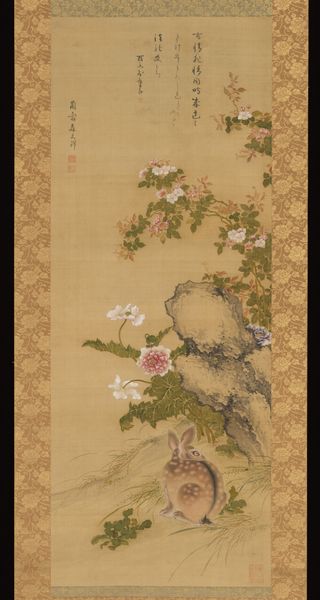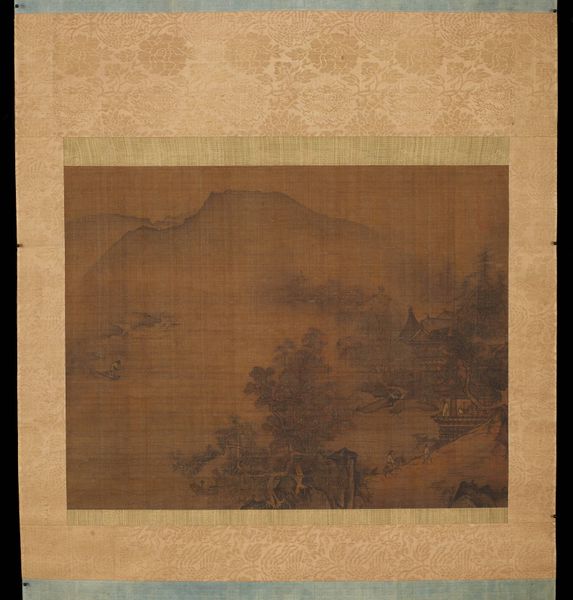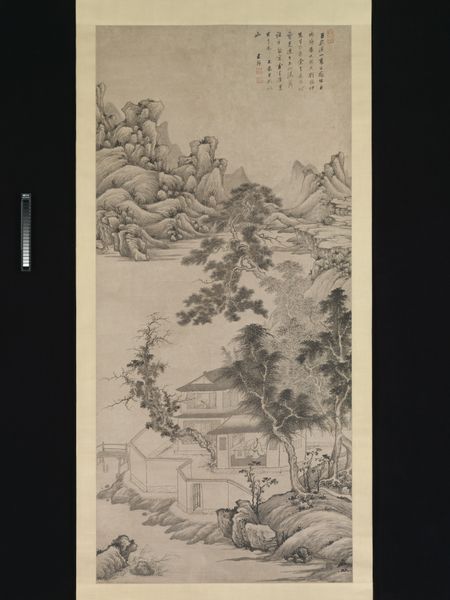
painting, paper, ink
#
water colours
#
ink painting
#
painting
#
asian-art
#
landscape
#
paper
#
ink
#
orientalism
#
calligraphy
Dimensions: 77 5/8 × 38 15/16 in. (197.17 × 98.9 cm) (image)95 1/2 × 46 7/8 in. (242.57 × 119.06 cm) (overall)
Copyright: Public Domain
Curator: What a subtle wash of tranquility. There's a delicacy that really draws you in. Editor: Indeed. What we’re looking at is a Chinese landscape rendered in ink and light watercolours on paper. It’s titled "Chinese Landscape after Huang Gongwang" and it’s estimated to have been created sometime in the 18th or 19th century. Curator: That title suggests direct engagement. It's almost an act of reverence through imitation. Huang Gongwang, a towering figure. But I sense more than imitation; there's an interpretation, a reimagining, right? I notice the homes nestled within the landscape and then the single boat… they invoke very specific feelings about mankind's place within the natural world. Editor: Precisely! This emulation speaks volumes about the cultural significance Huang Gongwang held, centuries after his death. By recreating the landscape, this later artist positioned themselves within a lineage, a school of thought and visual language that has deep cultural roots. It's fascinating to observe how landscapes, in Asian art especially, act as carriers of philosophy, conveying ideals of harmony and contemplation. Curator: It does offer insight into the relationship with art and power; How cultural institutions affect artistic creation. Was this intended as an academic exercise, do you think? Or perhaps a display of artistic skill for a specific patron? The light application of color creates this incredible dreamy quality, while the intricate linework suggests serious dedication. Editor: Good point. Looking closer, one picks up the iconography of a retreat from the political sphere. Look how small the people appear compared to the massive mountains. We find consistent reminders of the relative significance of mortal concerns. A kind of visual koan for those weary of earthly demands. Curator: A subtle statement indeed. The inscription, too, tells a story, if only we could decipher it fluently. I imagine the artist hoped this work would circulate among a particular audience, steeped in the same aesthetic and philosophical traditions. I think what truly interests me is considering the work's path through history and to us here. Editor: And how images speak across those centuries... Huang Gongwang provided the wellspring, but our artist imbues it with fresh sentiment. I am so intrigued about this quiet conversation between generations expressed here. Curator: It speaks volumes about legacy and influence, the way artists internalize and re-articulate the visual language of their predecessors. Editor: Absolutely, leaving its echo with us, centuries later.
Comments
minneapolisinstituteofart almost 2 years ago
⋮
This monumental painting combines a variety of imagery associated with the prevailing idea of eremitism: the state of being a hermit and seclusion from society. One popular pattern associated with eremitism is known as “reclusion in a fishing boat.” In early Chinese literary tradition, the archetypal character of the recluse often reflected great wisdom but appeared as a humble man. Fishermen were often described in literature as wise recluses, who took the guise of a humble man. This idea inspired a type of composition called yuyin, sometimes translated into English as “fisherman-recluse” or “reclusion in a fishing boat.” The gentlemen shown sailing off along a mountain stream in this painting are certainly not fishermen but rather recluses.
Join the conversation
Join millions of artists and users on Artera today and experience the ultimate creative platform.
